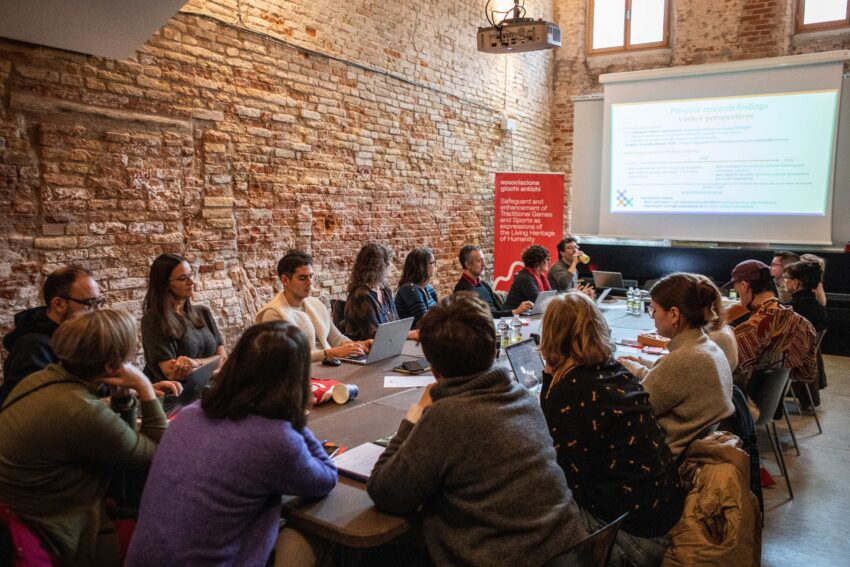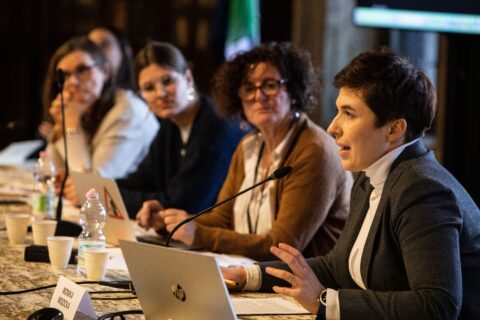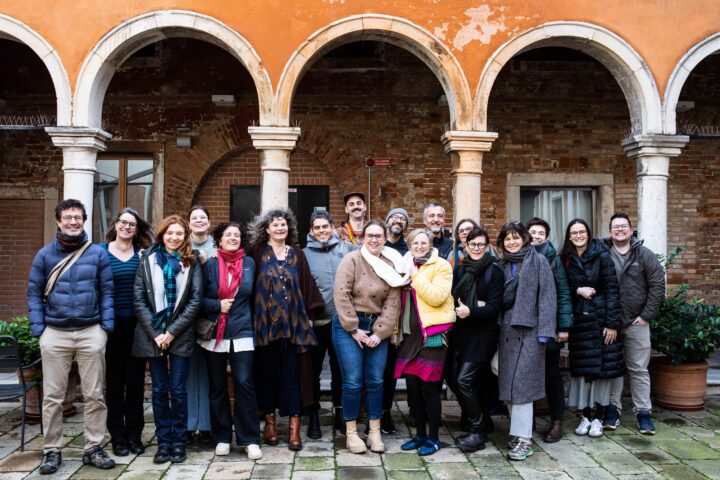A warm welcome in Venice! - Shaping pathways towards sustainable tourism in the very heart of overtourism.
Highlights of the 2025 Living Heritage Journeys meeting in Venice
The 2025 Transnational Meeting of Living Heritage Journeys, hosted by Associazione Giochi Antichi (AGA) in Venice from 30 January to 1 February, brought together the project’s Consortium members, several Think Tank members, and Italian community members and stakeholders. This marked an important stage in the project, concluding the pre-pilot phase, and opening the next stage of designing 5 pilot projects for the next two years.
The meeting was an in-depth exchange where the results and findings of the pre-pilots were shared, and the crucial next steps were discussed.
With one face-to-face transnational meeting per year, this was an important opportunity for in-depth discussions between partners and stakeholders, strengthening their close collaboration. Participants shared experiences, lessons learnt and emerging ideas over three intense days of international round table discussions. Several heritage communities from the Veneto region also joined and played a central role in the meeting. They demonstrated living heritages practices that are the focus of this project, sharing their passion and enthusiasm, as well as their questions and concerns about tourism meeting living heritage.

© Barbara Rigon, Associazione Giochi Antichi
Three intense days of knowledge sharing, in-depth discussions … and Venetian cultural experiences
Day 1 –
The consortium partners arrived from their various European locations (Belgium, Croatia, Italy, Poland, and Sweden), thrilled to have the opportunity to meet in person.
The first day’s working session was focussed on the project development: looking ahead to the next steps as the project progresses from the pre-pilot to the pilot phase, and discussing the structure and timeline of 2025. We were also joined by the project’s embroidery artist, there to follow the proceedings to inform their own artistic interpretations. The evening was a chance for catching up over a delicious meal of Venetian specialities, such as salt cod antipasti and pandoro sweet bread, arranged by AGA.
Day 2 –
Winding through the narrow alleyways and past the picturesque canals we arrived at the world-famous San Marco square. Here the second day’s meetings would be held.
The setting couldn’t have been more symbolically charged… This transnational meeting aiming to reflect and work on sustainable tourism with living heritage was being hosted within the Palazzo Ducale: an iconic landmark, overlooking San Marco square, in the very heart of the (over)touristic and renowned UNESCO World Heritage city of Venice.
Joined now by members of the Think Tank and various Italian stakeholders, the day featured presentations and discussions from multiple voices. In the morning, presentations were given by various Italian cultural agencies and the Think Tank members. They presented key reflections on the theme, each from their own area of expertise.
The afternoon session was set up as an open space for a wider audience and an important occasion to open the floor and listen to the voice of the Italian communities and associations involved. They shared their touristic dreams, with their ambitions and hopes for the future helping to inspire the next steps of the project. There was even an impromptu demonstration of the technique of voga (Venetian standing rowing)!
As one member of the Venetian voga community described it:
“It’s not just a sport, it’s not just a game, it’s much more than that: a way of life … Our association is a family to us; we gather to defend our customs and traditions. We are committed to having tourists understand that there is much more than just the physical beauty of Venice.”
The active participation of living heritage practitioners sharing their passion and concerns was a clear expression of the central role heritage communities play in this project.
Next, the programme provided for the consortium members to present the key aspects they have collected throughout 2024 in relation to each of the pilot projects in the 5 European countries, via research, surveying, workshops with local and national stakeholders, etc.
This day of in-depth discussions was rounded off with a guided visit to the historic and awe-inspiring Palazzo Ducale.
Day 3 –
In the final round table discussion on the third day, the Think Tank experts provided feedback: after having participated and listened to the various stakeholders’ contributions, pilot experiences and practitioners’ perspectives, they helped to identify key issues, challenges and insights from the pre-pilot reports and data, and critical directions for the upcoming phases.
Finally, the event closed with some engaging living heritage experiences: the voga community provided a delicious lunch in their Cavana Tintoretto headquarters and initiated us into a voga experience on the lagoon. The participants were set the challenge of learning this special standing rowing technique, practicing for themselves this living heritage so strongly connected to the Venetian context of living together in, on and between the waterways.

© Barbara Rigon, Associazione Giochi Antichi
Reflections on the meeting
At this stage of the project, responding to the wide diversity across the 5 pilot contexts is proving to be a brainteaser. At the same time, as several of the Think Tank members emphasised, this diversity is very much a core strength of Living Heritage Journeys and it can be a spur towards critically understanding and innovating ways of integrating living heritage into sustainable tourism practices. Rather than developing a one-size-fits-all methodology, the partners look forward to developing an array of approaches suitable for varying contexts. As Harriet Deacon, one of the Think Tank members suggested, we can take inspiration from “The Enchanted Broccoli Forest” recipe book by Mollie Katzen, which rather than providing rigid instructions, encourages cooks to draw on their embodied knowledge and intuition, and to experiment and enjoy the creative process of cooking. This kind of flexible and creative approach can provide inspiration for Living Heritage Journeys.
Another important challenge discussed was that of bringing together the two fields of living heritage and tourism. Working with stakeholders from across different fields means finding a shared language, compatible methodologies, mutual understanding and trust. Often, those working with living heritage are fearful of the threats posed by tourism and feel powerless vis-à-vis the impactful tourism industry, while tourist players may be concerned that safeguarding living heritage hinders tourism development. Developing intersectoral approaches and strategies to address these concerns is a key area of work for Living Heritage Journeys.
Taking place in the heart of Venice, a city dealing with overtourism issues, this was a powerful setting to reflect on the role that living heritage can play in creating a more sustainable tourism for the future. The three days of intensive discussions enabled a deeper level of reflection on the key project issues and directions. The partners returned home reenergised and inspired by these transnational working days, with a clearer picture of the challenges to be addressed, but also feeling empowered to move forward to the next stage of the project.
A big thank you to AGA for their excellent organisation and hosting, and to everyone involved for their committed participation!

© Barbara Rigon, Associazione Giochi Antichi